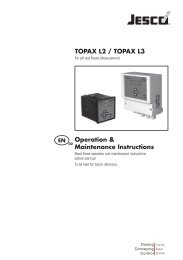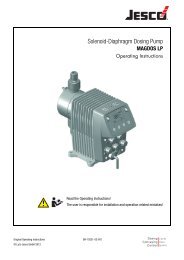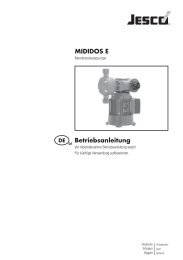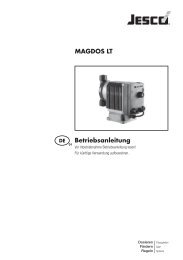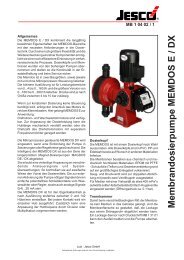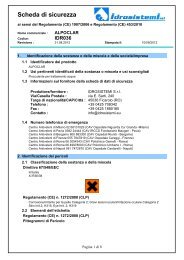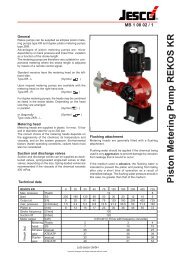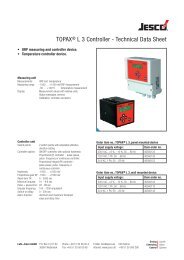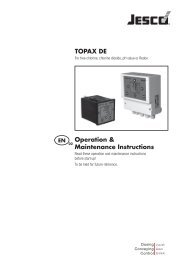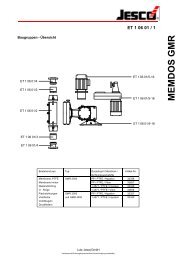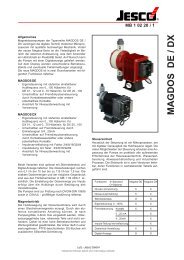MINIDOS A - Lutz-Jesco Gmbh
MINIDOS A - Lutz-Jesco Gmbh
MINIDOS A - Lutz-Jesco Gmbh
You also want an ePaper? Increase the reach of your titles
YUMPU automatically turns print PDFs into web optimized ePapers that Google loves.
BW 1 03 02 / 4<br />
6. When correct operation is achieved, set to<br />
required output by means of the adjusting knob<br />
or by remote adjustment. For approximation refer<br />
to the performance curves shown in MB 1 03 02.<br />
Depending on the installation and the chemicals<br />
used, these values may differ and must be checked<br />
under operating conditions.<br />
7. The manufacturer of the metering equipment is<br />
not responsible for damages due to excessive or<br />
low flow rates resulting from faulty pump settings<br />
or incorrect and insufficient installation of<br />
peripheral fittings.<br />
7. The stroke adjustment is now set to maximum<br />
while the motor is running.<br />
8. Now the head is remounted by tightening it<br />
carefully with the screws. Apply a tightening<br />
torque of approx. 125 Ncm.<br />
9. After connecting the metering lines the pumps<br />
is started as described in section 7, startup.<br />
10.If the diahragm wear is excessively high, try to<br />
find out the reason. Please refer to the following<br />
section, troubleshooting.<br />
<strong>MINIDOS</strong> A<br />
8. Lubrication<br />
Lubrication<br />
The diaphragm metering pump <strong>MINIDOS</strong> requires<br />
little maintenance. The gear of the pump is provided<br />
with molybdenum-disulphite lubricant for long service<br />
life. In the case of difficult operating conditions or<br />
high ambient temperature the grease should be<br />
renewed about every 5,000 operating hours. Use<br />
"Molycote BR2plus" or "OKS400" for this purpose.<br />
Caution: This drive is not suitable for oil lubrication!<br />
Replacing the diaphragm<br />
In the case of a rupture the diaphragm can be<br />
replaced as follows:<br />
1. The chemical contained in the metering line is<br />
drained so that the metering lines become<br />
pressureless. Please observe the aforementioned<br />
safety instructions for this purpose.<br />
2. The flow rate of the metering pump is set to zero<br />
while the motor is running. Thus the diaphragm is<br />
moved to its front end position.<br />
3. The head is removed using an appropriate tool<br />
(monkey wrench with 3 mm hexagonal recess).<br />
4. Grasped at the edge, the diaphragm can now be<br />
turned out counterclockwise. Check the existing<br />
support plate for damage (in the case of diaphragm<br />
dia. 38 mm) and replace, if necessary.<br />
5. Before installing the new diaphragm the diaphragm<br />
flange section must be cleaned of the chemical.<br />
Otherwise the diaphragm might be attacked from<br />
the rear side.<br />
6. The new diaphragm is turned in clockwise until it<br />
sits close.<br />
Make sure that the possible existing support<br />
plate is positioned correctly.<br />
<strong>Lutz</strong>-<strong>Jesco</strong> GmbH<br />
Improved changes are always reserved without notice.



